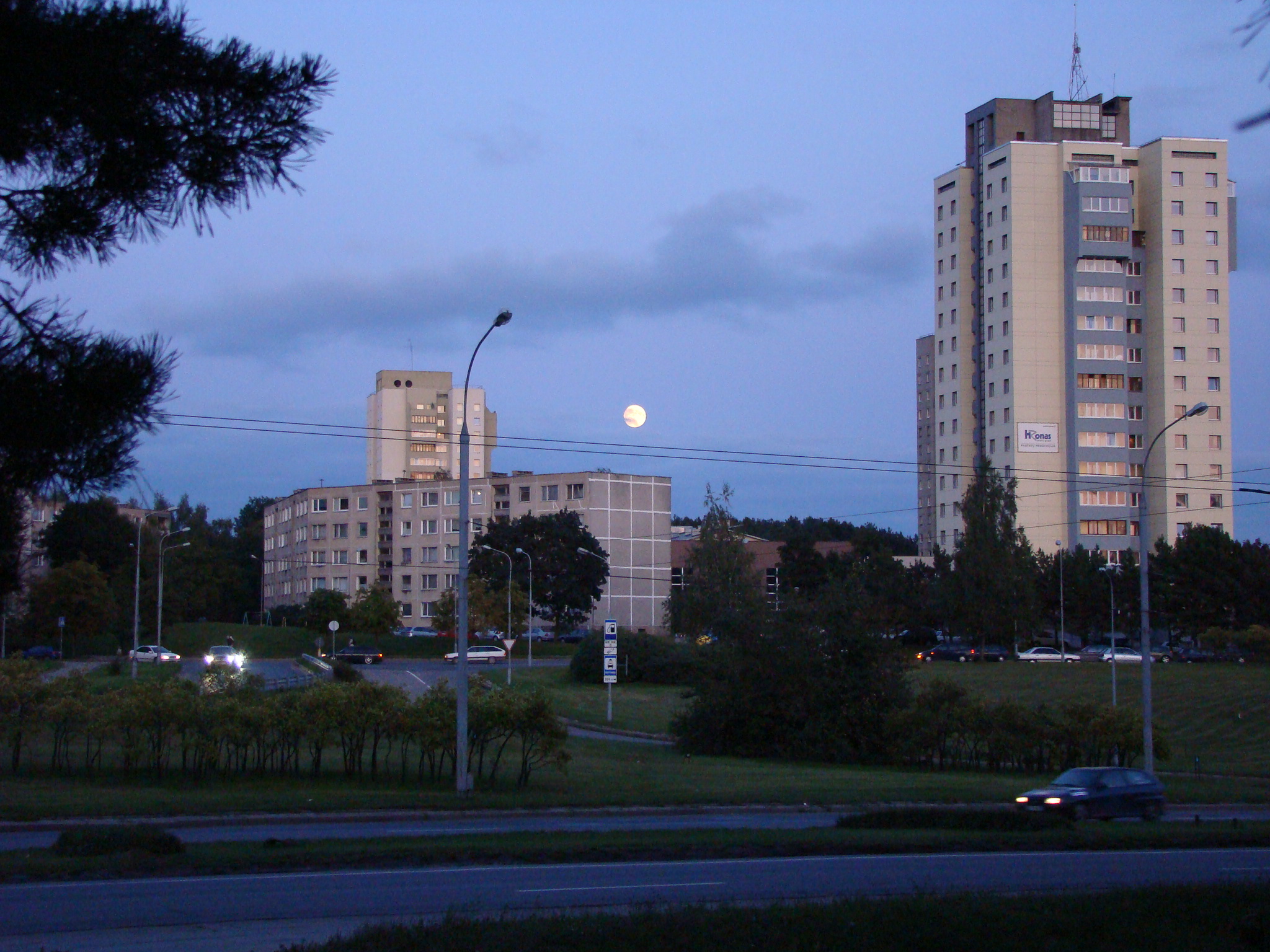Lazdynai Vilnius on:
[Wikipedia]
[Google]
[Amazon]
:''"Lazdynai" is also an old name of Krasnoznamensk, Kaliningrad Oblast, Russia
 Lazdynai ( lt, Lazdynų seniūnija, Lazdynai) is an eldership of Vilnius,
Lazdynai ( lt, Lazdynų seniūnija, Lazdynai) is an eldership of Vilnius,
 Since the 1950s, the
Since the 1950s, the
here
. The architects decided to go against the Soviet architectural style and based their design on study of the architecture of Finland. Initially the authorities monitored the project with suspicion, but eventually it was accepted, and in 1974 the leading figures of the Lazdynai project (architects
Lithuania
Lithuania (; lt, Lietuva ), officially the Republic of Lithuania ( lt, Lietuvos Respublika, links=no ), is a country in the Baltic region of Europe. It is one of three Baltic states and lies on the eastern shore of the Baltic Sea. Lithuania ...
, situated on the right bank of the Neris River. It covers a area of and has a population of 31,097 (according to the 2011 census). The word means "hazel
The hazel (''Corylus'') is a genus of deciduous trees and large shrubs native to the temperate Northern Hemisphere. The genus is usually placed in the birch family Betulaceae,Germplasmgobills Information Network''Corylus''Rushforth, K. (1999). ...
bushes" in Lithuanian.
History
 Since the 1950s, the
Since the 1950s, the Baltic states
The Baltic states, et, Balti riigid or the Baltic countries is a geopolitical term, which currently is used to group three countries: Estonia, Latvia, and Lithuania. All three countries are members of NATO, the European Union, the Eurozone, ...
experienced fast population growth and faced housing shortages. When Soviet leader Nikita Khrushchev put forth his program of fast residential construction, based on prefabricated panel buildings dubbed ''khrushchovka
A ''khrushchevka'' ( rus, хрущёвка, khrushchëvka, p=xrʊˈɕːɵfkə), also known by the derogatory nickname ''khrushchoba'' ( rus, хрущоба, khrushchoba, t=khru-slum), is a type of low-cost, concrete- paneled or brick three- to ...
s'', it threatened the integrity of the well-preserved historical style of Vilnius. A group of architects struggled against the intrusion of ''khrushchovkas'' into the historical city center. Eventually they were awarded with the project to build a satellite city outside Vilnius. The chosen area was close to a Polish village of Leszczyniaki or Lazdynai in Lithuanian, situated southeast of old Vilnius.Both names, Leszczyniaki and Lazdynai apparently derive from the word for "hazelnut tree
The hazelnut is the fruit of the hazel tree and therefore includes any of the nuts deriving from species of the genus '' Corylus'', especially the nuts of the species ''Corylus avellana''. They are also known as cobnuts or filberts according ...
": Polish '' leszczyna'' and Lithuanian '' lazdynas''. In Polish the term ''leszczyniak'' (singular for "leszczyniaki") also means "a person from Leszno or Leszno Voivodeship", see, e.g., the usaghere
. The architects decided to go against the Soviet architectural style and based their design on study of the architecture of Finland. Initially the authorities monitored the project with suspicion, but eventually it was accepted, and in 1974 the leading figures of the Lazdynai project (architects
Vytautas Čekanauskas
Vytautas Edmundas Čekanauskas (13 May 1930, Šiauliai – 7 July 2010, Vilnius) was a Lithuanian architect, professor of the Vilnius Academy of Art.
In 1974 he, together with colleagues, was awarded the Lenin Prize in architecture for the de ...
, Vytautas Brėdikis
Vytautas (c. 135027 October 1430), also known as Vytautas the Great (Lithuanian: ', be, Вітаўт, ''Vitaŭt'', pl, Witold Kiejstutowicz, ''Witold Aleksander'' or ''Witold Wielki'' Ruthenian: ''Vitovt'', Latin: ''Alexander Vitoldus'', Ol ...
, Vytautas Balčiūnas
Vytautas (c. 135027 October 1430), also known as Vytautas the Great ( Lithuanian: ', be, Вітаўт, ''Vitaŭt'', pl, Witold Kiejstutowicz, ''Witold Aleksander'' or ''Witold Wielki'' Ruthenian: ''Vitovt'', Latin: ''Alexander Vitoldus'', O ...
, and Gediminas Valiuškis
Gediminas Valiuškis (Gediminas Stanislovo Valiuškis) (born January 24, 1927, Kaunas, Lithuania – 28 April 1999, Vilnius) was a Lithuanian architect, with expertise in design of residential buildings.Algimantas Kleinotas and Vincentas Šileika) were awarded the Lenin Prize in architecture.Becker, Sven (November 23, 2005)
"The architectural battleground for Lithuanian independence"
The Baltic Times
"The architectural battleground for Lithuanian independence"
The Baltic Times
See also
*Vilnius Minties Gymnasium
Vilnius "Minties" gymnasium ( lt, Vilniaus "Minties" gimnazija) is a 4-year high school in Lazdynai microdistrict, Vilnius, Lithuania
Lithuania (; lt, Lietuva ), officially the Republic of Lithuania ( lt, Lietuvos Respublika, links=no ...
Notes
References
{{Vilnius elderates Neighbourhoods of Vilnius